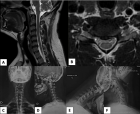Abstract
Research Article
Changes in the frequency and intensity of Tinnitus using the Suppressive Noise Spectrum
Ming Zhang*, Alysia Jeske and Sarah Young
Published: 21 July, 2017 | Volume 1 - Issue 1 | Pages: 006-012
Objective:To report findings of improvement in patient tinnitus intensity and changes in frequency using a novel suppressive noise spectrum.
Design: Single-subject; each subject served as his or her own control. Each patient received treatment, and changes were measured over time.
Setting: Tertiary referral via university otolaryngology and hospital audiology as well as audiology clinics in the region.
Patients: Fifteen tinnitus ears in 8 patients.
Interventions: Therapeutic and rehabilitative.
Main Outcome Measures:: Tinnitus frequency, tinnitus intensity, and tinnitus questionnaire.
Results (Findings): After 3 months of exposure to the customized suppressive noise spectrum therapy, patients showed a shift in tinnitus frequency in addition to a significant decrease in tinnitus intensity from the pre-treatment to post-treatment condition (p<0.05). Typically, improvement was gradual based on comparing 3 sets of data collected at baseline, 1.5 months and 3 months.
Conclusion: Using suppression in tinnitus is novel. Based on our findings, using a customized suppressive noise spectrum is effective in shifting the frequency, reducing the intensity of subjective tonal tinnitus, and improving the handicap based on THQ test. From this seminal report, factors related to maximizing its effectiveness (e.g., length of listening time, level of hearing loss, and application for alternative tinnitus types) may be considered for future research.
Read Full Article HTML DOI: 10.29328/journal.ated.1001002 Cite this Article Read Full Article PDF
Keywords:
Tinnitus; Customized Sound; Sound Therapy; Rehabilitation; Outcomes; IOWA Tinnitus; Handicap Questionnaire (THQ)
References
- Baguley D, McFerran D, Hall D. Tinnitus. Lancet. 2013; 382: 1600-1607. Ref.: https://goo.gl/GZFggQ
- Heller AJ. Classification and epidemiology of tinnitus. Otolaryngol Clin North Am. 2003; 36: 239-248. Ref.: https://goo.gl/wvoR1H
- Langguth B, Kreuzer PM, Kleinjung T, De Ridder D. Tinnitus: Causes and clinical management. Lancet Neurol. 2013; 12: 920-930. Ref.: https://goo.gl/Qq5FHd
- Pape J, Paraskevopoulos E, Bruchmann M, Wollbrink A, Rudack C, et al. Playing and listening to tailor-made notched music: Cortical plasticity induced by unimodal and multimodal training in tinnitus patients. Neural Plast.2014;2014: 1-10. Ref.: https://goo.gl/ZUnKcF
- Jackson JG, Coyne IJ, Clough PJ. A preliminary investigation of potential cognitive performance decrements in non-help-seeking tinnitus sufferers. Int J Audiol.2014; 53: 88-93. Ref.: https://goo.gl/ezcBJF
- Mohamad N, Hoare DJ, Hall DA. The consequences of tinnitus and tinnitus severity on cognition: A review of the behavioral evidence. Hear Res.2015; 1-11. Ref.: https://goo.gl/15XEXu
- Erlandsson SI, Hallberg LR. Prediction of quality of life in patients with tinnitus. Brit J Audiol. 2000; 34: 11-20. Ref.: https://goo.gl/fY7rtj
- Pantev C, Rudack C, Stein A, Wunderlich R, Engell A, et al. Study protocol: Münster tinnitus randomized controlled clinical trial-2013 based on tailor-made notched music training (TMNMT). BMC Neurol. 2014; 14: 14-40. Ref.: https://goo.gl/sM5wTQ
- Stracke H, Okamoto H, Pantev C. Customized notched music training reduces tinnitus loudness. Commun Integr Biol. 2010; 3: 274-277. Ref.: https://goo.gl/eSJLM5
- Teismann H, Okamoto H, Pantev C. Short and intense tailor-made notched music training against tinnitus: The tinnitus frequency matters. PLOS ONE. 2011; 6. Ref.: https://goo.gl/zD1747
- Okamoto H, Stracke H, Stoll W, Pantev C. Listening to tailor-made notched music reduces tinnitus loudness and tinnitus-related auditory cortex activity. Proc Natl Acad Sci U S A. 2010; 107: 1207-1210. Ref.: https://goo.gl/hgAQFN
- Ariizumi Y, Hatanaka A, Kitamura K. Clinical prognostic factors for tinnitus retraining therapy with a sound generator in tinnitus patients. J Med Dent Sci.2010; 57: 45-53. Ref.: https://goo.gl/YcqVbV
- Hobson J, Chisholm E, El Refaie A. Sound therapy (masking) in the management of tinnitus in adults. Cochrane Database Syst Rev. 2012; 11: 1-25. Ref.: https://goo.gl/FLq6gj
- Meeus O, Heyndrickx K, Lambrechts P, De Ridder D, Van de Heyning P. Phase-shift treatment for Tinnitus of cochlear origin. Eur Arch Otorhinolaryngol. 2010; 267: 881-888. Ref.: https://goo.gl/LjXaoN
- De Ridder D, Vanneste S, Weisz N, Londero A, Schlee W, et al. An integrative model of auditory phantom perception: Tinnitus as a unified percept of interacting separable subnetworks. Neurosci Biobehav Rev. 2013;44: 16-32. Ref.: https://goo.gl/a9aEmY
- Majkowski J, Bochenek Z, Bochenek W, Knapik-Fijałkowska D, Kopeć J. Latency of averaged evoked potentials to contralateral and ipsilateral auditory stimulation in normal subjects. Brain Res. 1971; 25: 416-419. Ref.: https://goo.gl/UdDRKv
- Poeppel D. The analysis of speech in different temporal interaction windows: Cerebral lateralization as ‘asymmetric sampling in time’. Speech Commun. 2003; 41: 245-255. : https://goo.gl/ARjYMm
- Zatorre RJ, Belin P, Penhune VB. Structure and function of auditory cortex: Music and speech. Trends Cogn Sci. 2002; 6: 37-46. Ref.: https://goo.gl/PueT7K
- Zatorre RJ, Grandour JT. Neural specializations for speech and pitch: Moving beyond the dichotomies. Philos Trans R Soc Lond B Biol Sci. 2008; 363: 1087-1104. Ref.: https://goo.gl/3kKH2s
Figures:

Figure 1
Similar Articles
-
Changes in the frequency and intensity of Tinnitus using the Suppressive Noise SpectrumMing Zhang*,Alysia Jeske,Sarah Young. Changes in the frequency and intensity of Tinnitus using the Suppressive Noise Spectrum. . 2017 doi: 10.29328/journal.ated.1001002; 1: 006-012
-
Feasibility study on the evaluation of the effect of narrow-band CE-Chirp ASSR in the hearing field after hearing aid in hearing-impaired childrenWang Yonghua*,Xing Shuoyao. Feasibility study on the evaluation of the effect of narrow-band CE-Chirp ASSR in the hearing field after hearing aid in hearing-impaired children. . 2019 doi: 10.29328/journal.ated.1001007; 3: 007-011
Recently Viewed
-
Characterization of Salmonella spp. isolated from small turtles and human in Republic of KoreaSu-Jin Chae,Jin-Suk Lim,Deog-Yong Lee*. Characterization of Salmonella spp. isolated from small turtles and human in Republic of Korea. Insights Vet Sci. 2020: doi: 10.29328/journal.ivs.1001027; 4: 051-055
-
Screening for Depressive Symptoms in Clinical and Nonclinical Youth: The Psychometric Properties of the Dutch Children’s Depression Inventory-2 (CDI-2)Denise HM Bodden*,Yvonne Stikkelbroek,Daan Creemers,Sanne PA Rasing,Elien De Caluwe,Caroline Braet. Screening for Depressive Symptoms in Clinical and Nonclinical Youth: The Psychometric Properties of the Dutch Children’s Depression Inventory-2 (CDI-2). Insights Depress Anxiety. 2025: doi: 10.29328/journal.ida.1001047; 9: 028-039
-
The Bacteriological Profile of Nosocomial Infections at the Army Central Hospital of BrazzavilleMedard Amona*,Yolande Voumbo Matoumona Mavoungou,Hama Nemet Ondzotto,Benjamin Kokolo,Armel Itoua,Gilius Axel Aloumba,Pascal Ibata. The Bacteriological Profile of Nosocomial Infections at the Army Central Hospital of Brazzaville. Int J Clin Microbiol Biochem Technol. 2025: doi: 10.29328/journal.ijcmbt.1001032; 8: 009-022
-
Breast Cancer in FemaleLorena Menditto*. Breast Cancer in Female. Arch Cancer Sci Ther. 2024: doi: 10.29328/journal.acst.1001040; 8: 013-018
-
Germline BRCA1 Mutation inSquamous Cell Carcinoma of Oesophagus: Driver versus Passenger MutationAmrit Kaur Kaler*, Shraddha Manoj Upadhyay, Nandini Shyamali Bora, Ankita Nikam, Kavya P, Nivetha Athikeri, Dattatray B Solanki, Imran Shaikh, Rajesh Mistry. Germline BRCA1 Mutation inSquamous Cell Carcinoma of Oesophagus: Driver versus Passenger Mutation. J Genet Med Gene Ther. 2024: doi: 10.29328/journal.jgmgt.1001011; 7: 015-019
Most Viewed
-
Impact of Latex Sensitization on Asthma and Rhinitis Progression: A Study at Abidjan-Cocody University Hospital - Côte d’Ivoire (Progression of Asthma and Rhinitis related to Latex Sensitization)Dasse Sery Romuald*, KL Siransy, N Koffi, RO Yeboah, EK Nguessan, HA Adou, VP Goran-Kouacou, AU Assi, JY Seri, S Moussa, D Oura, CL Memel, H Koya, E Atoukoula. Impact of Latex Sensitization on Asthma and Rhinitis Progression: A Study at Abidjan-Cocody University Hospital - Côte d’Ivoire (Progression of Asthma and Rhinitis related to Latex Sensitization). Arch Asthma Allergy Immunol. 2024 doi: 10.29328/journal.aaai.1001035; 8: 007-012
-
Causal Link between Human Blood Metabolites and Asthma: An Investigation Using Mendelian RandomizationYong-Qing Zhu, Xiao-Yan Meng, Jing-Hua Yang*. Causal Link between Human Blood Metabolites and Asthma: An Investigation Using Mendelian Randomization. Arch Asthma Allergy Immunol. 2023 doi: 10.29328/journal.aaai.1001032; 7: 012-022
-
An algorithm to safely manage oral food challenge in an office-based setting for children with multiple food allergiesNathalie Cottel,Aïcha Dieme,Véronique Orcel,Yannick Chantran,Mélisande Bourgoin-Heck,Jocelyne Just. An algorithm to safely manage oral food challenge in an office-based setting for children with multiple food allergies. Arch Asthma Allergy Immunol. 2021 doi: 10.29328/journal.aaai.1001027; 5: 030-037
-
Snow white: an allergic girl?Oreste Vittore Brenna*. Snow white: an allergic girl?. Arch Asthma Allergy Immunol. 2022 doi: 10.29328/journal.aaai.1001029; 6: 001-002
-
Cytokine intoxication as a model of cell apoptosis and predict of schizophrenia - like affective disordersElena Viktorovna Drozdova*. Cytokine intoxication as a model of cell apoptosis and predict of schizophrenia - like affective disorders. Arch Asthma Allergy Immunol. 2021 doi: 10.29328/journal.aaai.1001028; 5: 038-040

If you are already a member of our network and need to keep track of any developments regarding a question you have already submitted, click "take me to my Query."


















































































































































